
Three houses awaiting completion on the 4700 block of West 11th Avenue.
There is nothing unusual about the ones in the photos, there are dozens of others just like them under construction all over the lower mainland. These three would currently come on the market for about $2.25M each, as per nearby comparables (Point Grey; new; 2500+sqft; 33×122 ft lots).
Concrete basements; almost everything else will be plywood, drywall and stucco. Quite possibly the worst materials for our climate. There’s a good chance they’ll need new roofs before their mortgages are paid off.
Behold the mouldy shoe-box knockdowns of 2050-2060.
As Buffett said, “Price is what you pay, Value is what you get”. – vreaa
[Thanks to ‘westsidefrank’ for the photos]
scullboy at vancouvercondo.info 28 Sept 2010 6:05am – [in response to an article in the Vancouver Sun 27 Sep 2010 suggesting a need to relax construction rules] “I have lived in most of the provinces (with the exception of the Prairies) and I have to say Van/BC has the worst. buildings. EVER. You can rent nice flats and apartments all over Montreal, some of them date from the early part of the 20th century. The windows may still be single paned glass but the construction is still rock solid. When you walk in to some of the apartment buildings, you can *feel* how solid they are. Maybe it’s because they aren’t made of pressboard, so the acoustics are different… I don’t know. We’ve survived 2 hurricanes in the last 5 years out here in Halifax and except for damage caused by uprooted trees, the region did just fine. Hell even in Toronto most of the units feel solid (though I’m not sure about those buildings at Spadina and Front).BC is the only place I’ve ever lived where it’s common to see those massive rain screens. Homeowners in BC are the only people in the country stupid enough to buy the “it’s different here, we have special housing needs” bullshit.
If anything Van/BC needs TIGHTER restrictions on building. Frankly I don’t hold out much hope that the city/provincial homeowners are bright enough to clue into that. If anything I’d expect the “It’s different here” meme to produce an even more stupid and greedy batch of buyers to accept even shoddier construction.”
Anonymous at vancouvercondo.info 28 Sept 2010 8:22am – “My house in Winnipeg was built in 1910 out of 2×8 redwood… [We lived in it through the 1980’s] …The beams in the basement were so hard you couldn’t drive in a nail. In February, when it was -40 deg. outside we were wearing short sleeves around the house.
Fast forward 20 years in time and 2,000 km in space and here I am in a rackety townhouse built entirely out of 2×4s with almost no insulation, wet and moldy where the lightest gust of wind blows right through it… my bills are double those from frigid Manitoba and we wear hoodies in the house half of the time.”
mflat at vancouvercondo.info 27 Sep 2010 4:48pm – “Took a long walk from downtown to Main & 25th to check out some houses. First up was V840359, listed at $720K. This is a Vancouver Special built on one of the worst bogs in the city. Take a walk down 18th sometime, and have a laugh at all the tilted foundations where neighboring roofs are almost touching due to the house angle. The house listed was like a horror slum on the inside. The worst part of it was the room angles, with sloping floors, and walls/ceilings that felt trapezoidal due to the sunken foundation. No thanks.”
Added:
ulsterman at vancouvercondo.info 28 Sep 2010 8:51pm – “I believe this to be one of the most galling aspects of the insane housing prices on the LM. Not only are they insane to anyone in the world beyond the bubble of the “Playground of the Gods”, but the quality is so pathetically poor.
When my civil/structural engineering dad came to visit me in 2005, he was shocked by the flimsiness of the houses built and being built. I have a distinct memory of helping him cut a hole in the wall of our modest little Irish home – we had a lot of fun (not) drilling through the two layers of brick separated by insulating foam. Our little house – two layers of red brick – solid as a rock 60 years after construction, and yours today for about C$200k in Belfast. And yes, the median income there is the same as the income here. Shocking concept, I know.”
And updated with this contrarian word:
say what? at vancouvercondo.info 28 Sep 2010 11:24pm – “Plywood, OSB, wood in general is structural and has nothing at all to do with building envelope. First step toward eliminating leaky walls: overhangs and sloped roofs! Second step: proper installation of building envelope, especially around windows. Flimsy construction? That plywood provides shear strength primarily, and there are many interior sheeted shear walls, required here by engineers, that you would never seen in a non-earthquake zone. The walls themselves are bolted down to foundation and the successive floors are tied down to foundation using metal straps or rods, all of which was not the case in the past. Softwood lumber is not treated with anything, it is just dried in a kiln. Wet lumber and plywood dries out once under cover, and takes on moisture content proportional to air humidity, and at that moisture content does not deteriorate. Outside walls are required to be 2×6 for greater insulation… the list of things I read that are just wrong or clueless goes on and on.
Before you denounce this post as the rantings of a rabid housing bull whose livelihood depends on the Vancouver real estate ponzi, just take a breath and read the next sentence. Houses here are needlessly complex in design, and drastically overpriced. The market here will eventually fail in dramatic fashion, causing rampant unemployment amongst the hated dependent industries.”




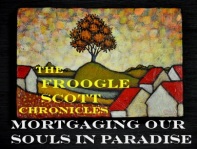















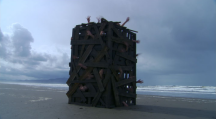






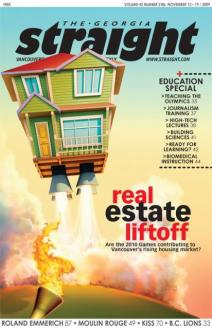
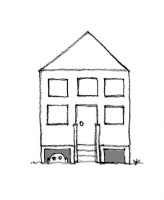



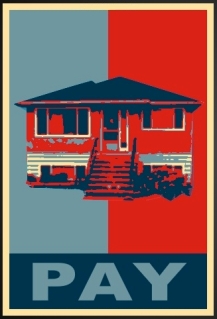
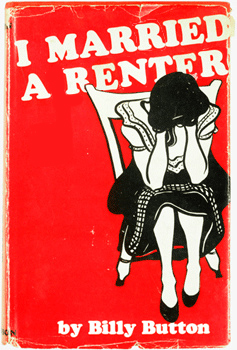
I am not in construction but I have seen enough construction sites in Europe and Canada / US to at least have a basic idea.
HOW they build here has me shaking my head, especially the huge use of softwood lumber which needs to be treated and then built correctly to not have any issues, instead of building with hardwood (harder to use, harder to get, more costly), which would at least prevent the house from rotting if it’s build shitty.
Condos aren’t build any better, I could watch them build one right next to me and a neighbour of mine IS in construction. When we watched them pour concrete and do other things he was just shaking his head but also acknowledged that the codes in BC are… “funny” at times (he’s from Germany).
Yeah, lots of wet cardboard will need to be torn down in 20 – 30 years.
No one actually uses hardwood for construction Michael. It is astonishingly expensive and its hardness is completely unrelated to how rot resistant it is. Cedar is one of the most rot resistant woods out there but it is very soft and structurally quite weak. Ipe is hard and rot resistant but you’d have to be Li Ka-shing to afford a house framed with it.
Really? My understanding was that most (not all) hardwoods deal better with moisture.
I was aware of the cost problem as it grows slower and thought that was the main reason.
Plywood, 2x4s and drywall are perfectly good construction materials if the buildings are constructed properly. In fact, in earthquake prone regions the ability of the building frame to flex (compared to brick or concrete structures) is a benefit. Regrettably, Vancouver construction is shabby by most standards. You can rest assured that if the building in Vancouver is built fall through spring it will have its exterior saturated by rain then rapidly covered over. That is especially a problem with OSB. I watched condos beside my office being built in the rain a few years ago. The subfloors turned black with moisture and I watched work crews using barn brooms to sweep the sitting water off the blackened floors. They sell for close to $600K per unit nowadays.
Another issue with Vancouver construction (I don’t know how bad it is elsewhere) is the sizzle over steak design features. Three floor “townhouses” with a total floor area just barely in excess of 1000 sq ft often have less useable living area than a smaller one floor apartment (you can’t put a recliner on the stairs). But hey, it’s a townhouse and you have your own private entrance… Granite and stainless kitchens with barely enough room on the counters to put a pizza box. Tiny apartments with large bathrooms consuming valuable floor space and fireplaces consuming valuable wall space look pretty on a casual viewing but constrict an already small living space. I could go on and on. Oops, I already have…
MarKoz-> Thanks for the thoughts. When you say “perfectly good construction materials if the buildings are constructed properly”, isn’t that asking too much of the trades? For instance: Highly skilled craftsmen may be able to produce waterproof structures with wood alone, but if that skill is long dead, or the labour cost for it too high, shouldn’t we move on to foolproof materials?
I hear you vreaa, but the tradesmen in other cities use these materials to produce sound structures. Why not here? Also there are no fool proof materials. In the US they use Structural Insulated Panels but they require specialized knowledge to be put together correctly. If our guys can’t (or won’t) build properly using technology that has been around for decades my guess is they won’t do much better with new stuff.
The saddest part is that the older houses that are being torn down to make way for these cardboard castles are built better AND with solid hardwood, not plywood and plasterboard. Yet the “Asian” market apparently doesn’t like the older homes – they want new plastic and cardboard instead – so many older homes that are being destroyed are in excellent condition and need little more than a paint job to update them.
How can the City of Vancouver even claim to be the “Greenest City” when it allows perfectly good homes built from old growth wood to be tossed in the dump so that these new outrageously expensive junk homes can be built in their place?
I agree with Michael’s comment above. We walk past this building site on West 11th regularly and have been watching these places take shape. We often wonder if they may fall over if a puff of wind came from the wrong direction 😉
The wood being used there may have been seasoned before it arrived at the construction site, but as the whole structure is exposed to the rain all of the time it is getting very wet. We often wonder why they don’t cover it all with tarps. to help prevent the rain getting to it.
Even though we live with the risk of earthquakes here, we’d far rather have a brick-built or concrete home, although some of those are subject to leaking with the poor construction standards imposed here. It never ceases to amaze us how many buildings here leak (both older and newer ones), given our climate.
A builder in my neighbourhood was building a house for himself. He tarped it to keep out the rain. No one EVER tarps when they’re building for someone else in this city.
“My house in Winnipeg was built in 1910 out of 2×8 redwood… the beams in the basement were so hard you couldn’t drive in a nail. In February, when it was -40 deg. outside we were wearing short sleeves around the house.
Fast forward 20 years in time…”
===================
20 years would make it 1930 then…
‘You can’t add’ -> If I was the original writer of the anecdote, I’d be tempted to reply to you using the handle ‘You can’t read’.
Do you have trouble comprehending most movies made since 1950?
Read it again:
Anonymous at vancouvercondo.info 28 Sept 2010 8:22am – “My house in Winnipeg was built in 1910 out of 2×8 redwood… the beams in the basement were so hard you couldn’t drive in a nail. In February, when it was -40 deg. outside we were wearing short sleeves around the house.
Fast forward 20 years in time and 2,000 km in space and here I am in a rackety townhouse built entirely out of 2×4s with almost no insulation, wet and moldy where the lightest gust of wind blows right through it… my bills are double those from frigid Manitoba and we wear hoodies in the house half of the time.”
Yes, so you can ‘cut and paste’, but can you ‘read’?
I don’t mean know what each word means, I mean understand the piece.
For your sake: The writer is not 120 years old. Clearly they lived in Winnipeg in a house that was built in 1910. Fast forward 20 years from when they lived in Winnipeg, not from 1910.
Note: When a guys says “My love is like a red, red rose”, he doesn’t mean his girlfriend is a flower.
vreaa | 29 September 2010 at 7:59 am |
Yes, so you can ‘cut and paste’, but can you ‘read’.
I don’t mean know what each word means, I mean understand the piece.
For your sake: The writer is not 120 years old. Clearly they lived in Winnipeg in a house that was built in 1910. Fast forward 20 years from when they lived in Winnipeg, not from 1910.
————
No mention of when they lived in Winnepeg. It just mentions 1910 then 20 years later.
Yes, it does mention when they lived in Winnipeg….They lived in Winnipeg 20 years ago!
OK. Enough!
No mention of living in Winnipeg 20 years ago – you are just assuming this…
The whole statement is specious. We are not going to overbuild with nominally measured rare woods (2×8 redwoods), a builder would not build his own house that way. Also, even your Spruce 2x4s will be hard and difficult to drive a nail into after 20 years. Further, parrallam and other engineered wood products are far superior (in strength and dimension) to any natural wood product.
I do believe Vancouver building codes need to be revised but not due to any of the romantic notions listed above.
Um no. He says the He lived in a house that was build in 1910, the OP never said he build the house in 1910, just that he lived in the house. Then 20 years later he lives in Vancouver.
This must be grade two writing, seriously.
Yes, it is not written very well.
The context of Anonymous’s statement is obvious to anyone with a brain. But please, ruthlessly correct the prose FTW.
Good idea, done.
Ruthlessness was not required.
Why did you correct it at all? The only people misinterpreting this are those who think this blog is some sort of time-warped historical narrative.
Here’s an anecdote for you: Friend sold his home last year for 30% off what it was worth the year before that. Hopefully “You can’t add” can correct my temporal ambiguity. Scott Bacula will undoubtedly be rolling over in his grave.
I naively thought your request was serious.
So much for my ‘reading’ ability.
Did you mean: Scott Bakula , Jesse?
I am glad someone almost fixed the odd math issue above. The 80’s + 20 years is not quite today.
@you can’t add. Put a lid on it. People have more things to worry about than you’re little quibbles regarding spelling and math. Besides this site is to discuss RE.
@vreaa. How about blocking this dink.
“My house in Winnipeg was built in 1910 out of 2×8 redwood… [We lived in it through the 1980’s] …The beams in the basement were so hard you couldn’t drive in a nail. In February, when it was -40 deg. outside we were wearing short sleeves around the house.
It’s pretty clear to me. He lived in the house buit in 1910 sometime in 1980-1989 and twenty years later (ie. 2000-2009) lives in a shitty townhouse. duhhh!
@ You Can’t Add: this isn’t an American TV show; sometimes you have to interpret things for yourself.
In response to the posting, I’m of the opinion that most of the construction materials used here are fine. They may seem a little flimsy, but they’re sufficient for building a long-lasting house. Construction quality, on the other hand, is often abhorrent. That, in my opinion, is the nature of an awful lot of the leaky condos out there.
My father-in-law’s house was built quickly, with cheap materials, by a speculative developer. Thinnest materials possible (some didn’t meet code), second-growth timber, etc, etc, etc. To me, it all seems remarkably flimsy. Creaks in the floor? The developer missed the joists when he nailed down the plywood. Sliding door running rough? The developer put a used door in a new house. Strange depression in the roof? Developer oriented the plywood the wrong way on that one board (we braced the board from underneath; maybe we’ll fix it properly the next time we replace the roof). But you know what? Aside from a few minor issues (eg, the roof one, and some wonky plumbing that shouldn’t have made it past the inspector), the house is in great shape. It’s 35 years old now; I’ve inspected the walls and crawlspace for moisture, and it should easily last another 35 years.
Provided nobody chooses to redevelop it before then, that is. Poorly-thought-out cookie-cutter design? Yes. That’s the biggest failing, and the most likely reason why it would ever be demolished.
I wondered why there were so many comments on this post and then came and read them. Someone needs to get a life. I read the Winnipeg comment and didn’t have too much problem understanding what he meant the first time I read it. Perhaps it’s an ESL issue for the guy complaining about it.